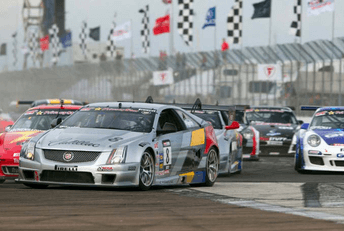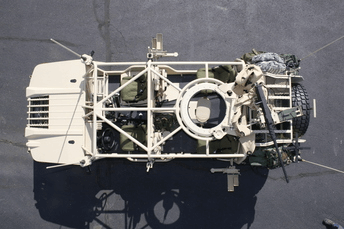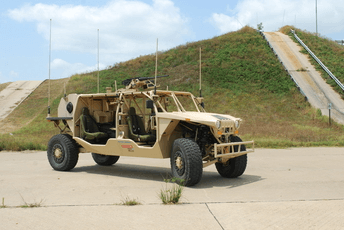IZOD INDYCAR SERIES
IZOD INDYCAR SERIES
GRAND PRIX OF ST. PETERSBURG
STREETS OF ST. PETERSBURG
TEAM CHEVY DRIVER PRESS CONFERENCE NOTES AND QUOTES
MARCH 23, 2012
Andretti Autosport drivers, Marco Andretti, No. 26 RC Cola Chevrolet, James Hinchcliffe, No. 27 GoDaddy.com Chevrolet and Ryan Hunter-Reay, No. 28 DHL/Sun Drop Citrus Soda Chevrolet met with members of the media at the Grand Prix of St. Petersburg prior to the start of the weekend’s activities. Here are a few selected quotes from the press conference. Full audio available upon request.
ANDRETTI: ON STARTING THE NEW SEASON: “The new car has been pretty similar. The biggest thing with the new car is going to be the engine, in my opinion. The thing still has four wheels so it handles similar to the old one. A lot of things that worked on the old car are working now. With the engines, it has been fun working with Chevy and the engineers to kind of tune it to your style. Other than that, it is still a race car.”
HUNTER-REAY: ON THE NEW COMBINATION OF DRIVERS: “We’ve been working really hard on moving Andretti Autosport forward these last few years. With the camaraderie we have now, it’s just easy. We communicate well together. It is an open platform; so hopefully now, we can just turn that into results. That’s the hard part. We are certainly working hard at it. The greatest part is that when we get done with our first practice, we’re all going to share what we learned and hopefully move forward three times as fast. That’s the plan.”
HINCHCLIFFE: ON STARTING THE NEW SEASON: “A year ago, I was sitting on the sidelines, so it is quite cool to see how a year can change things. I’m now in a great situation here with Andretti Autosport and GoDaddy.com. This is one of my favorite events. It is a great event for us to start the season. It has just got such a cool atmosphere. It is a cool track. Now, we are coming into the season with these new cars, the new engines; a whole lot of unknowns. It is just all very exciting. For me, it is a new car, a new engine, new track, new team, new teammates. I almost feel like a rookie all over again. It has been a long off-season. A lot of testing; a lot of development. Now, I’m completely happy to be here and finally get to racing and get on the track.”
ANDRETTI: HOW IS RUBENS BARRICHELLO GOING TO IMPACT THE SPORT? “I think it is exactly what we need. The more followers; the more eyes on us. Rubens will be able to do that. He is a very talented driver. For us, he is more of a pain in the butt (LAUGHS). If we can learn how to beat him, we’ll be looking good.”
HUNTER-REAY: ARE THERE ANY CONCERNS FOR THE COURSE? “The only concern is that in the past, we’ve been able to run over them (the curbs). They were still pretty big, but they were designed in way that we could hit them. We had to setup the car to get over them; but that would open up the corner and thus make it faster through the corner for us. But, now, we have to drive around them since they are so aggressive. Our concern is that it is going to lower our cornering speeds a little bit. We need these things to look as fast as possible on TV. Now, we may have to tiptoe around them. We’ll see.”
HUNTER-REAY: IS THIS SEASON THE MOST UNKNOWNS AS A DRIVER YOU HAVE HAD? “It is definitely the most unknowns. We have no idea, really, but it is exciting. Everyone is a contender and everyone has a chance at making their mark early in the season. At the same time, we could be having a great weekend doing everything you are asked to do, and things could fall through for you from a reliability standpoint. Chevy and Ilmor have done an amazing job with these engines in such a short amount of time. It really is a short amount of time. There are so many moving parts; so many variables involved in making these things go fast, it would honestly be expected there might be reliability issues, because we are just trying so many different things. So, yes, it is nerve-wracking to say the least.”
ANDRETTI: WHAT ARE YOUR THOUGHTS ON THE NEW RULES AFFECTING THE DRIVERS? “We are race car drivers, we don’t anybody to pass us. I think it can be a little tricky, but I was definitely on-board for the rule change for blocking. They still don’t allow blocking. And blocking is different than defending. There is an art to defending. If you are the leader, if you want to come off the corner a little shallow, you should be able to drive down the straightaway wherever you came off the corner. Now you have to enter the next corner at a bit of a handicap. The guy behind actually has it better because he can set you up for the next corner. Definitely an art. One argument was there would be no passing on street circuits. I argued the opposite, because if someone is blocking me into turn one at Toronto, that is perfect for me because now I can get them down the back straightaway. He is not going to come off the next corner as quick. So, there is definitely an art to it.”
ANDRETTI: CAN YOU TALK ABOUT THE LEVEL OF COMPETITION IN THE SERIES? “It is the best it’s been. The competition from the drivers and the teams. In 2006, I’ll give you an example, I could be two-tenths off and still be in the top-six. Now, you aren’t making the top-six, you are probably 16th. It’s crazy. Now it’s all about that last two-tenths. Any driver can find that big step in speed. It’s about finding that last little bit. That last little bit is very detrimental today. This day and age puts an emphasis on pulling out what you have.”
HINCHCLIFFE: DOES YOUR EXPERIENCE IN INDY LIGHTS AT THIS TRACK HELP YOU? “I think my experience here in Indy Lights will serve a purpose. It will give me a little bit of a basis when we go out there. Obviously the car changes, but when you have track knowledge and you know you are in a different car, you know sort of what to expect from the car. You can take the different parts of the track that you know and sort of know roughly what is going to happen. The biggest difference now is actually the track more than the changes to the car. We were talking about the curves earlier; I think that is actually going to have more affect on my previous experience here in Indy Lights rather than the actual difference in the car.”
















